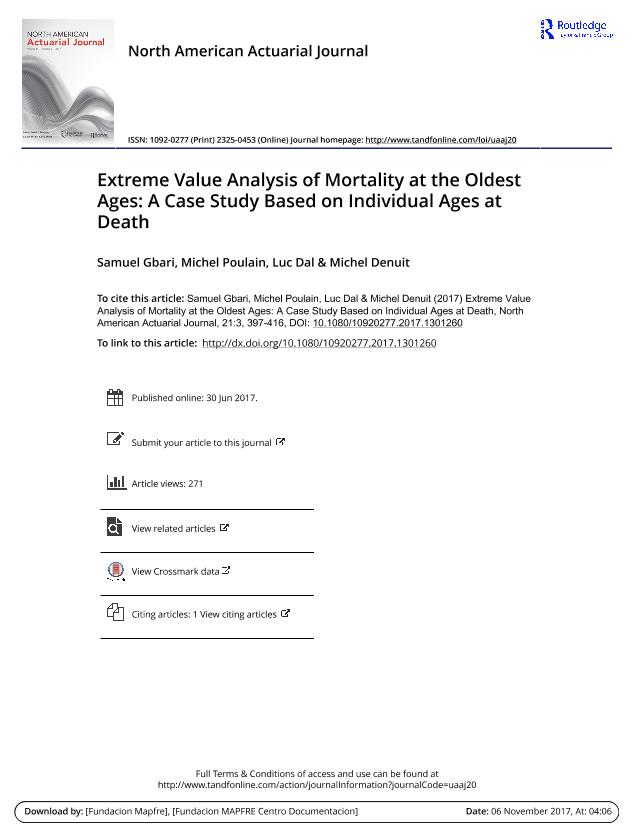Extreme value analysis of mortality at the oldest ages : a case study based on individual ages at death

Contenido multimedia no disponible por derechos de autor o por acceso restringido. Contacte con la institución para más información.
| Tag | 1 | 2 | Valor |
|---|---|---|---|
| LDR | 00000cab a2200000 4500 | ||
| 001 | MAP20170035053 | ||
| 003 | MAP | ||
| 005 | 20220911211735.0 | ||
| 008 | 171031e20170904esp|||p |0|||b|spa d | ||
| 040 | $aMAP$bspa$dMAP | ||
| 084 | $a341 | ||
| 245 | 0 | 0 | $aExtreme value analysis of mortality at the oldest ages$b: a case study based on individual ages at death$cSamuel Gbari... [et al.] |
| 520 | $aIn this article, the force of mortality at the oldest ages is studied using the statistical tools from extreme value theory. A unique data basis recording all individual ages at death above 95 for extinct cohorts born in Belgium between 1886 and 1904 is used to illustrate the relevance of the proposed approach. No leveling off in the force of mortality at the oldest ages is found, and the analysis supports the existence of an upper limit to human lifetime for these cohorts. Therefore, assuming that the force of mortality becomes ultimately constant, that is, that the remaining lifetime tends to the Negative Exponential distribution as the attained age grows is a conservative strategy for managing life annuities. | ||
| 650 | 4 | $0MAPA20080555306$aMortalidad | |
| 650 | 4 | $0MAPA20080578848$aAnálisis de datos | |
| 650 | 4 | $0MAPA20080597733$aModelos estadísticos | |
| 773 | 0 | $wMAP20077000239$tNorth American actuarial journal$dSchaumburg : Society of Actuaries, 1997-$x1092-0277$g04/09/2017 Tomo 21 Número 3 - 2017 , p. 397-416 |

